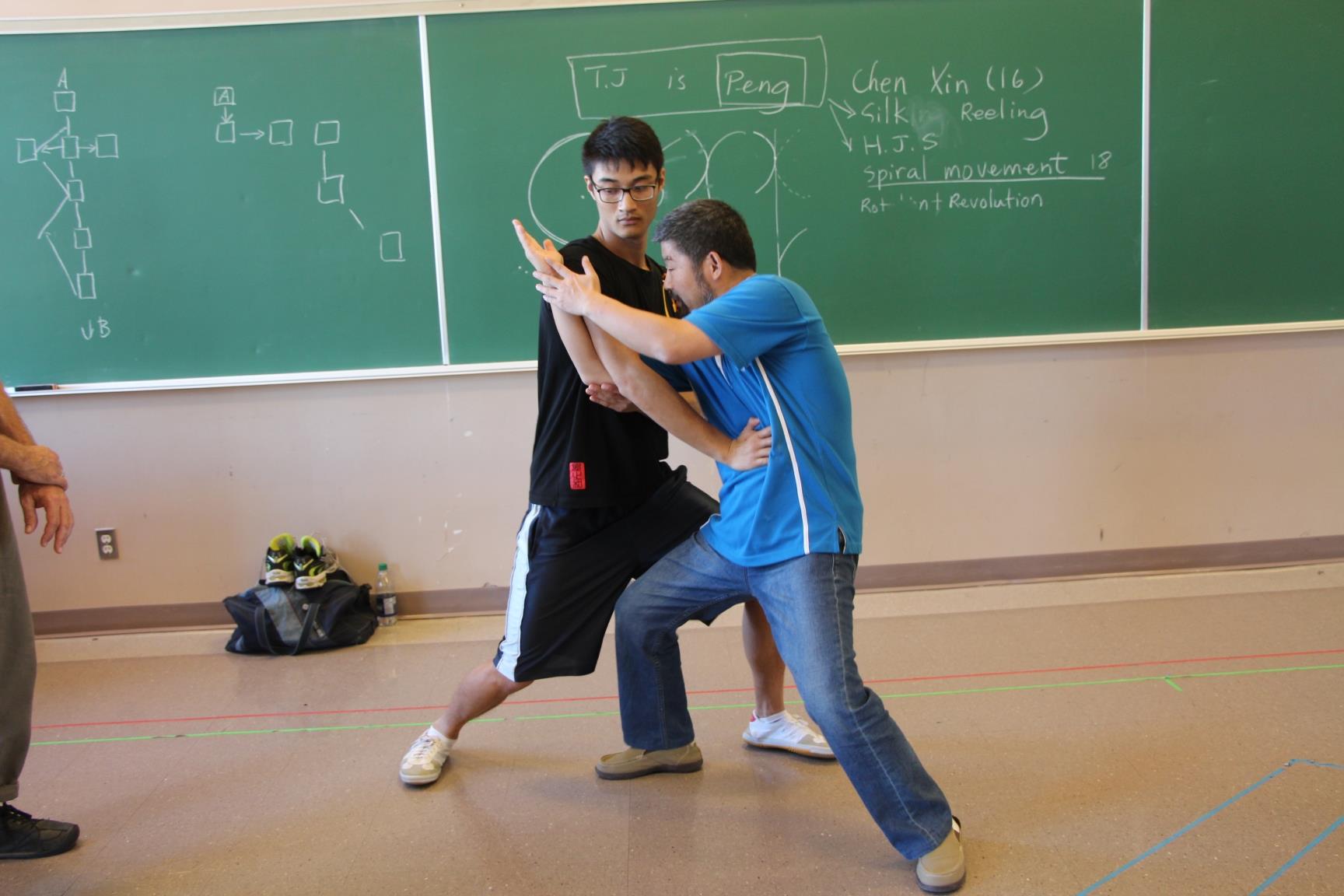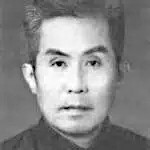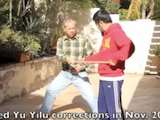 |
On yet another perfect autumn weekend in Ottawa, Master Chen guided his disciples and Taiji enthusiasts through the intricate art of Taijiquan. With meticulous planning, organizers Rachelle, Daniel, and James curated three days of intense training, immersing participants in Taiji history, philosophy, and the distinctive principles of the Practical Method.
A highlight of the workshop was an entire day dedicated to the hidden art of Pao Chui, offering attendees a rare opportunity to deepen their understanding. |
Special thanks to the dedicated students from Toronto and Montreal who made the long journey to experience hands-on training with Master Chen.
Tireless advocate of a traditional approach
Having attended many workshops, I continue to gain fresh insights into the Practical Method. Each experience deepens my appreciation for Master Chen’s dedication and meticulous effort in preserving the quality and standards of his Taijiquan.
For thirty years, Master Chen has traveled the world, sharing his unique insights into this ancient art. Despite the pressure to conform to the status quo, he has remained steadfast in his commitment to the principles of Taiji, as taught by his mentor, Hong Junsheng—a direct disciple of the renowned Chen Fake.
This direct transmission is significant not for its prestige, but for its role in preserving the integrity of ancient teachings. Through hands-on experience, Master Chen ensures that these invaluable ideas remain intact, unaltered by time or interpretation.
During the workshop, Master Chen shared an example of how meaning can be lost in translation. Among Taiji aficionados, it is commonly said that ‘Taiji is the art of Peng.’ However, the definition of Peng is often vague or shrouded in mystery, frequently associated with specific movements of the hand or body.
Grandmaster Hong Junsheng suggested that, in ancient times, Peng simply referred to a structure that does not collapse upon first impact—one that maintains its integrity under external force. Chen Xin, a 16th-generation Chen master, later expanded on this idea by introducing the concept that ‘Peng is silk reeling,’ helping practitioners grasp the essence of Chen Taijiquan. Grandmaster Hong further refined this understanding, describing silk reeling as spiral movements composed of positive and negative circles.
When Grandmaster Hong attempted to share his insights with the public in the 1960s, he faced ridicule and was ultimately ostracized by the Taijiquan community. It was only after international recognition and the success of his students in national push-hands competitions that his work was finally acknowledged. However, this deeper understanding of Peng remains primarily within the domain of the Practical Method.
Master Chen follows in his teacher’s footsteps, staying true to a precise and practical approach. His workshops avoid commonly accepted yet ill-defined concepts such as qi (氣) or jin (勁), instead grounding explanations in Daoist principles of Yin-Yang separation. Every theory is tested and explored through push-hands, serving as a tool for physical demonstration.
In each workshop, Master Chen provides hands-on training to all participants, regardless of their physical strength or martial arts experience. Through his tireless dedication, his students continue to work hard, spreading the benefits of training in the Practical Method.
Learning a new language
Master Chen, a trained linguist, often uses language acquisition as an analogy for the challenges of understanding Taijiquan. When an adult begins learning a new language, nothing initially makes sense. The instinctive approach is to map the foreign language onto one’s native tongue as a way of grasping its meaning. However, this method is prone to errors, as direct mapping can lead to misunderstandings.
The proper approach is to learn as an infant does—by immersing oneself in the environment. Through frequent and repeated use, one gradually internalizes the principles and nuances of the new language. Taijiquan should be learned in the same way: rather than relying on past experiences (your native language) to interpret the training, immerse yourself in Yilus and focus on understanding the principles that govern the practice.
A concrete example from language training may help illustrate this concept. Consider the following excerpt from Grandmaster Hong’s treatise, The Quality of Taijiquan (太極拳品):
In Chinese,
|
 Hong Junsheng |
If you input this into an automatic translation service like Google Translate, you will get:
Containing reservoir
Spirit too exposed, but also a disease, but also subtle….
The result is complete gibberish. Only a native Chinese speaker—one who also understands the philosophy of Taijiquan, like Master Chen—can accurately translate the verse into something truly meaningful, such as:
Reserve
The Internal energy is full
The outside does not have any pretension.
A thousand pound bow
Four ounces of arrow
Pulled tightly but not released
As if it has already reached the target.
For the reader, only those who appreciate the fine art of Taijiquan can grasp the surface meaning of these verses. However, the fortunate few who are familiar with Practical Method training can truly understand the fundamental ideas that these words encapsulate.
The complexities of interpretation and understanding pose significant challenges in learning Taijiquan. In the Practical Method, the solution is simple: ‘no deviation’—just follow the instructions of a qualified teacher.
The hidden art of Pào Chuí (炮捶)
The organizers were fortunate to persuade Master Chen to give us a glimpse of the second form, Erlu. While this form is commonly known as ‘Cannon Fist,’ the translation is somewhat misleading. The literal Chinese translation is ‘Cannon Hammer,’ but a more accurate interpretation would be ‘Hit like a cannon.’
The common understanding of Cannon Fist is its rapid movements and the use of fa-jin (發勁). However, the concept of fa-jin is often vaguely defined as the sudden release of energy and is visually associated with the rapid shaking of a body part.
A more knowledgeable Taiji practitioner would explain that the first form, Yilu, lays down the tracks, while the second form, Erlu, represents the moving object traveling along those tracks. While this theory provides a conceptual framework, it remains abstract until one begins learning Erlu firsthand.
The workshop was fortunate to have Master Chen demonstrate and teach the first thirteen moves of Erlu. Through training, participants could observe how the fundamental principles learned in Yilu—such as energy alignment, Yin-Yang separation, and indirect power—are applied in Erlu with speed and force.
As the name suggests, each technique in Erlu should be executed as if an object is being shot from a cannon, traveling directly along the energy path without deviation. As Master Chen aptly stated, ‘Yilu represents the DNA—the core—of the Practical Method system, while Erlu signifies its growth—the body—of the system.
Upon reflection, the meaning of the final stanzas of Grandmaster Hong’s poem became clear as Master Chen demonstrated Erlu.
山雨欲来,好风将起。
譬彼兵法,守如处女;
一触即发,浅尝辄止。
Which Master Chen translate as:
Mountain rain is coming,
A pleasant wind is starting
but like using military strategy
Stay still like a virgin
with one touch it all releases
With one taste all must releases.
This imagery comes to life vividly when Master Chen performs the lost art of Pao Chui. Each movement is executed with precision, speed, and power, making every technique unmistakably clear.
After two grueling days, I find myself reflecting on a quote that resonates deeply:
“About what one cannot speak, one must remain silent.”
“Wovon man nicht sprechen kann, darueber muss man schweigen.”
“「对于不可言说的,必须保持沉默。」) “
Who would have thought that Grandmaster Hong, Master Chen, and Ludwig Wittgenstein (路德维希‧维根斯坦) shared so much in common?



{ 2 comments… read them below or add one }
Thank you for taking the time to share this beautifully written article. Your words reveal your obvious enthusiasm for the quality of the workshop, and for Master Chen’s extraordinary teaching skills .
Lovely, Ming!